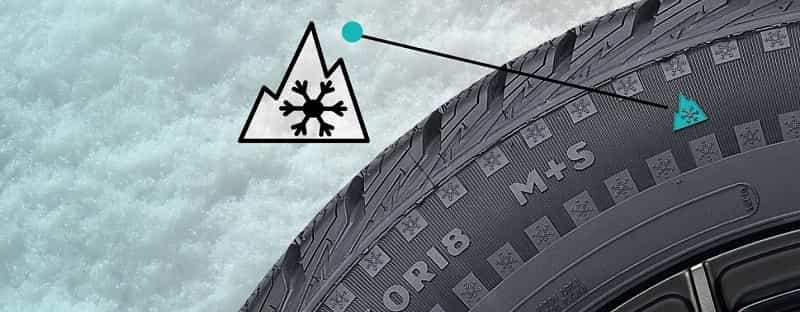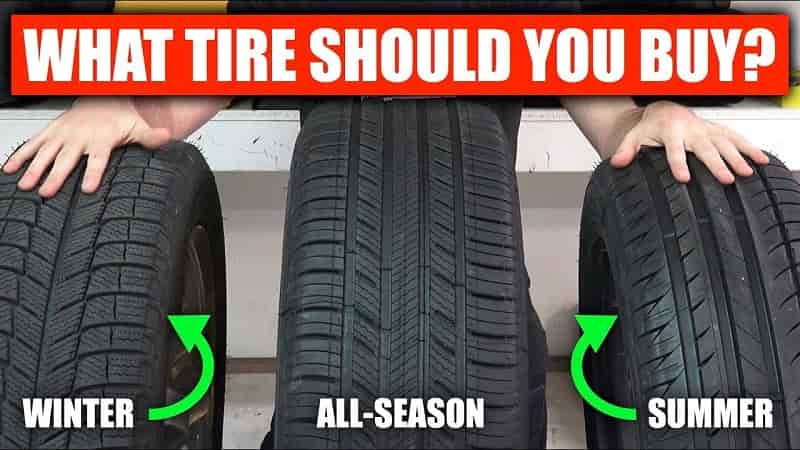It is not only the hot sun that has a harmful effect on the tires, when winter comes, the tires must be considered more carefully, if necessary, you should change the tires. Typically, when everyone wonders is the right time to switch to winter tires. In this post, we recall the many advantages of winter tires and the important criteria for knowing when to put them on.
Contents
What is Winter Tire?
Winter tires provide you with increased performance in winter conditions. Many countries like Germany imposed for a few years the fitting of these tires during the winter. It is the same for certain high-altitude regions, such as the Aosta Valley in Italy. Driving with summer tires in these countries which require winter tires means incurring a fine, immobilization of the vehicle, or even criminal prosecution in the event of an accident.

When to Put on Winter Tires
Compared with summer tires, winter tires have a rubber compound that can retain softness at low temperatures. In addition, winter tires have deeper cutouts for optimal performance in cold conditions (dry, wet, snowy or icy). These tires can be identified by special markings such as the "M+S" or 3PMSF logo. Tires marked "M+S" are tires that are not involved in any required performance testing. Therefore, there is no guarantee of performance for tires marked "M+S". In contrast, tires marked 3PMSF (3 Peak Mountain Snow Flake) are winter tires that have been certified through regulatory testing to ensure an appropriate level of performance in winter conditions. Famous car tire company Michelin recommends using 3PMSF tires in the winter.
When to Switch to Winter Tires?
It is a big misunderstanding that the drivers still think that it is necessary to wait for the onset of winter to put on winter tires. But the ideal timing is when the temperatures drop below 7 degrees Celsius. At low temperatures, the rubber on your summer tires hardens and loses grip. So, it can put you at risk. We recommend fitting winter tires from October and replacing them with summer tires around mid-April.
Winter tires must be in excellent condition, namely have grooves with a minimum depth of 2/32 inch. We even recommended replacing them with a new set of tires when the depth of the grooves is less than 4/32 inches. So, the tires keep all their grip qualities.
As a rule, the performance of a tire is directly proportional to the amount of heat the tire receives. Meanwhile, winter tires often have a higher silica content in the rubber than summer tires. This means that it can retain heat as well as the tire's flexibility better than summer tires when in the same low-temperature conditions. Therefore, winter tires are a perfect choice to ensure the car's traction is always at a safe level in conditions of a sharp drop in temperature, below 7 degrees Celsius.
The Advantages of Winter Tire
Two elements characterize winter tires: a specific design and a softer rubber. The winter tire indeed has dedicated tread patterns with more sides and grooves. The manufacturer designed them with treads and internal structure to provide optimum performance in winter conditions.
In addition, when the outside temperature drops, the rubber hardens even below 7 degrees. Thanks to a specific mixture of rubber such as mixing natural rubber, oils, and silica, winter tires keep all their flexibility in cold weather. It allows the vehicle to stay in contact with the road, even at low temperatures. The tires guarantee excellent grip on wet or even icy roads. The braking phases are more efficient thanks to the ultimate traction and steering control. It reduces the risk of accidents and increases your safety.
Finally, the winter tire is your best ally against the phenomenon of hydroplaning and black ice. Indeed, during winter, the risk of hydroplaning is almost permanent because of the thin film of water regularly present on the roads. The specific profile of winter tires makes it possible to evacuate water more efficiently and significantly reduces the risk of hydroplaning.
Winter Tires or All-Season Tires?
Can I use all-season tires in winter? Well, for those looking for a compromise between summer and winter tires, an all-season tire is also an option. Thanks to its specific composition, the rubber of this tire are resistant to high and low temperatures.
But like any compromise, it does not offer the same absolute performance. For example, the braking distance of all-season tires is shorter than summer tires. But it is still less than half of the winter tires. For this reason, the experts always recommend switching from summer tires to winter tires, as these are the ones that are best suited to extreme conditions.

When to Put on Winter Tires
A Difference Between the Front and the Back Tire?
While the Government forbids fitting summer tires with winter tires (summer at the front and winter at the rear), but you may fit new tires with tires already used.
In addition, it is recommended to fit the least worn (or new) tires to the rear rather than the front. It is because the driver does not control losing grip of the rear wheels. Fitting the newer ones at the rear balances the grip between the two axles and thus increases safety. The action of the steering wheel controls the front axle, while the rear wheels benefit from the optimum grip provided by new tires.
Should I Install Winter Tires on All Wheels?
When outfitting your car with winter tires, be sure to change all four tires to help maintain vehicle control and stability under all circumstances, especially on ice. Indeed, if you install winter tires only on the front axle of your car, you risk being confronted with a total loss of control. Certainly, installing winter tires on the front axle allows better grip at the front. Conversely, fitting winter tires only at the rear increases grip at the rear but could cause under-steer.
Conclusion
Nowadays, winter tires are almost as comfortable as summer tires and do not wear out much faster thanks to technologies that have made the rubber mixture more resistant. On average, there is less than a 10% price difference between a winter tire and a summer tire. And if you read above, winter tires are the guarantee of stability, grip, and handling at the top in the hardest conditions. When you have all of this information, it will be easier for you to decide when to switch to winter tires.
I’m Ivo Gievski, the content writer for Tireer. We built our website with over 15 years of experience and extensive research in the automotive and technology sectors. My dedication to delivering high-quality content is unwavering, and I strive to continuously hone my skills to stay ahead of industry trends and provide readers with informative, engaging, and valuable insights.